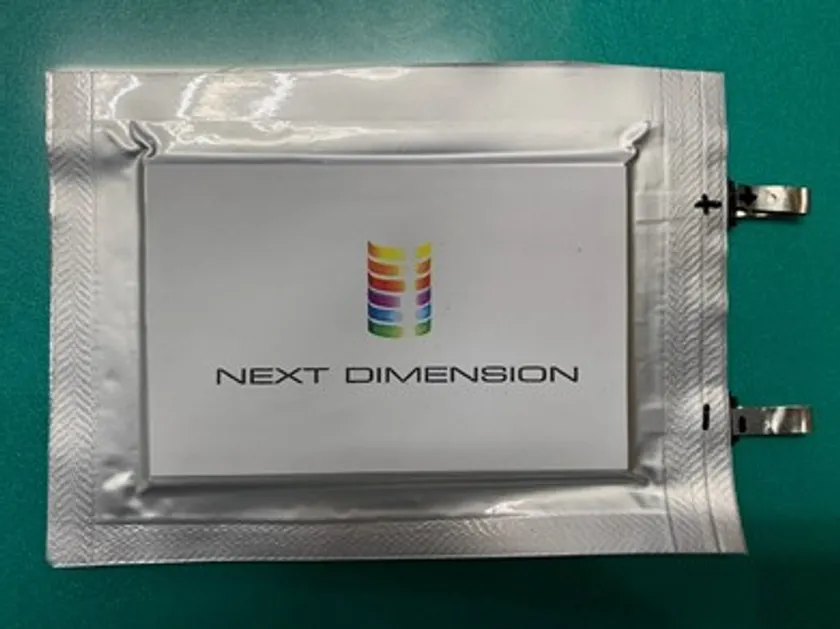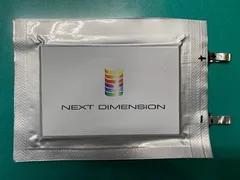Expectations for significant cost reduction of lithium-ion batteries! Green Science Alliance has developed a lithium-ion battery using recycled material Lithium-Ion Batteries Using Recycled Material Black Mass
GSアライアンス株式会社
Green Science Alliance Corporation (President: Ryohei Mori, Location: Kawanishi City, Hyogo Prefecture) has developed a lithium-ion battery using recycled material called black mass, which is removed from lithium-ion batteries. Instead of the current method of regenerating batteries by extracting metals such as cobalt and nickel once, the company has directly created a lithium-ion battery using a cathode created by a proprietary processing method. This is expected to significantly reduce the cost of lithium-ion batteries, which are used in all kinds of electronic devices such as cell phones, smartphones, tablets, and electric vehicles.

Lithium-ion battery using a cathode made directly from blackmass, a recycled material
Key Points
1. black mass is a recycled material taken from lithium-ion batteries, which looks like black powder and contains rare metals such as cobalt, nickel, manganese, and lithium.
2. The production of rare metals such as cobalt and nickel, which are necessary for lithium-ion batteries, is unevenly distributed in certain regions such as Russia, China, and Africa, and there is always a risk of political supply instability and price fluctuation. Therefore, it is ideal to recycle lithium-ion batteries.
3. Currently, some studies are being conducted to extract metals such as cobalt and nickel from black mass using hazardous chemicals such as sulfuric acid and hydrochloric acid, and then reused as the positive electrode of lithium-ion batteries, but this process is dangerous for workers and burdensome for machinery and equipment as well as the environment.
However, this process is hazardous to workers, machinery, equipment, and the environment. 4. We have developed a lithium-ion battery that uses a cathode made directly from black mass using a proprietary process without this metal extraction process.
Social Background of Development
Environmental destruction such as global warming (boiling), forest extinction, desertification, species extinction, water pollution, and plastic pollution caused by population explosion is becoming more and more serious. The main cause of global warming is said to be the rapid increase in greenhouse gases such as methane and CO2. In the future, it is ideal to use renewable energy sources such as solar and wind power generation, which do not depend on fossil fuels such as oil and coal. However, solar and wind power generation do not generate electricity when it is cloudy, raining, at night, or when the wind does not blow, making the electricity supply unstable. Therefore, storage batteries that can store electricity are very important. If storage batteries (rechargeable batteries) are made widely available to society, it will be possible to build a world that relies on clean, renewable energy for a society that aims for sustainable development and growth (SDGs).
However, the current lithium-ion battery, a typical storage battery, is expensive, and the production of rare metals such as cobalt, nickel, manganese, and lithium, which are raw materials, is unevenly distributed in certain regions such as Russia, China, Africa, and South America. There is always a risk of supply instability and price fluctuation. For example, in the case of cobalt, the Democratic Republic of Congo produces about half of the world's output. However, supply instability arising from political instability, child labor exploitation, and water and soil pollution caused by mass cobalt ore drilling operations have become issues.
Therefore, universities, research institutes, and companies around the world are beginning to consider attempts to recycle and regenerate lithium-ion batteries. In the European Union (EU), regulations have been introduced to mandate the recycling of storage batteries within the region, and plans call for 50% of lithium, the main material, to be recycled from used batteries by 2027 and 80% by 2031.
■ Research Details
In the main method of recycling lithium-ion batteries currently under study, used lithium-ion batteries are first collected, disassembled, and pulverized to remove major base metals (metals with large reserves and production volumes that are relatively easy to refine and recover) and other impurities. After these processes, a substance called "black mass," which is an apparent black powder, is extracted. This black mass contains plastics, resins, electrolyte, binders, aluminum, copper, iron, steel, graphite, and other materials that used to make up lithium-ion batteries. On the other hand, it also contains large amounts of precious metals such as cobalt, nickel, manganese, and lithium, as mentioned above. Therefore, these valuable metals are extracted and used to regenerate new lithium-ion batteries. However, highly toxic chemicals such as sulfuric acid and hydrochloric acid are used in the process of extracting these metals, and there are concerns about the high environmental impact and toxicity of these chemicals on the plant, machinery, workers, and the environment in general.
Against this backdrop, Dr. Ryohei Mori of the GS Alliance has developed a lithium-ion battery that uses a new cathode material made directly from black mass without using sulfuric acid or other metal extraction processes. The developed lithium-ion battery exhibited an initial capacity of approximately 85% of that of a commercially available lithium-ion battery using a cathode material called NMC111 (LiNi0.33Mn0.33Co0.33O2). Cycle stability was also excellent, comparable to commercially available NMC111.
The lithium-ion battery made in this way eliminates the metal extraction process, reduces the environmental impact, and the price of the black mass itself is lower because it is a recycled material, so the price of the cathode material, which makes up a large portion of the price of a lithium-ion battery, can be less than half that of a general-purpose battery.
The company aims to further improve battery capacity and cycle stability, and to commercialize lithium-ion battery-related products using black mass by supplying samples to customers in Japan and overseas.
Company Profile
Company name: Green Science Alliance (Fuji Pigment Co., Ltd. Group)
Representative: Ryohei Mori, Ph.
Head Office: 2-22-11 Kohana, Kawanishi City, Hyogo Prefecture, 666-0015, Japan
Business Description: Environment, tackling the issues of decarbonization and carbon neutrality,
Research and development of cutting-edge technologies in the fields of environment and energy that address the challenges of decarbonization and carbon neutrality.
(Adopted by UNOPS GIC KOBE, the UN's start-up company support program
adopted by UNOPS GIC KOBE, a UN start-up company support program, in 2020)
- Category:
- Technology & Development
- Genres:
- Technology Nature & Ecology Society(Japan)

